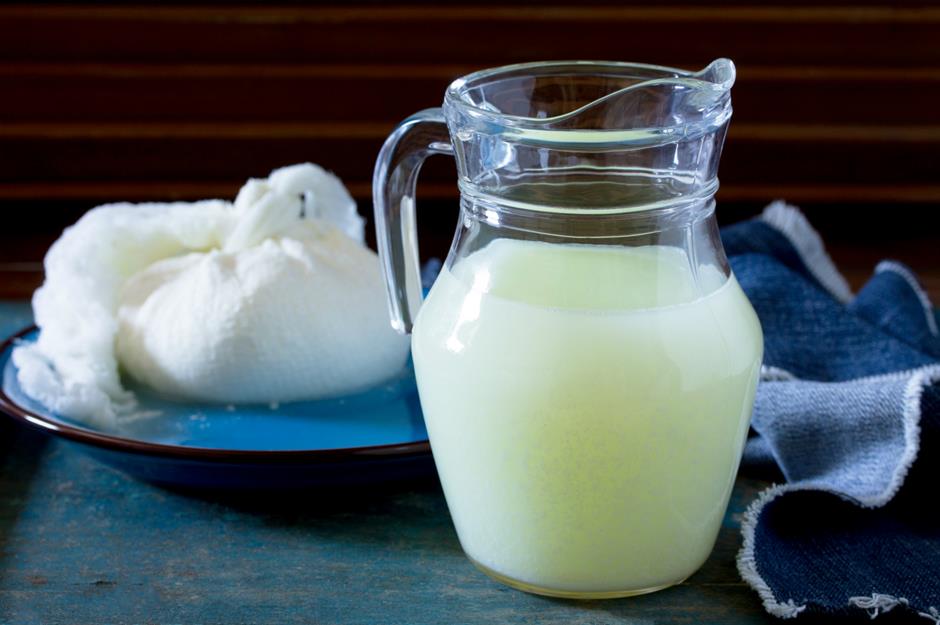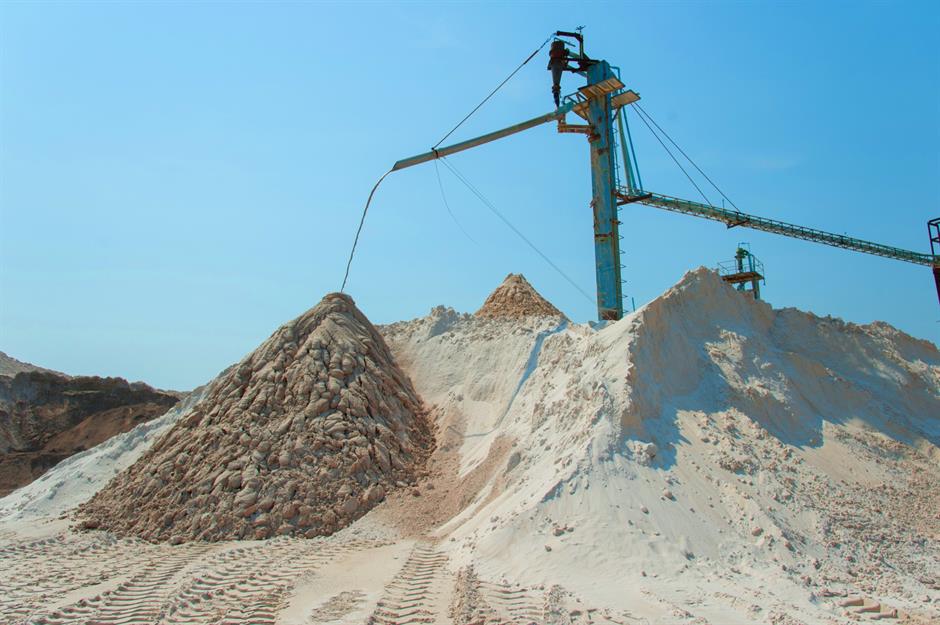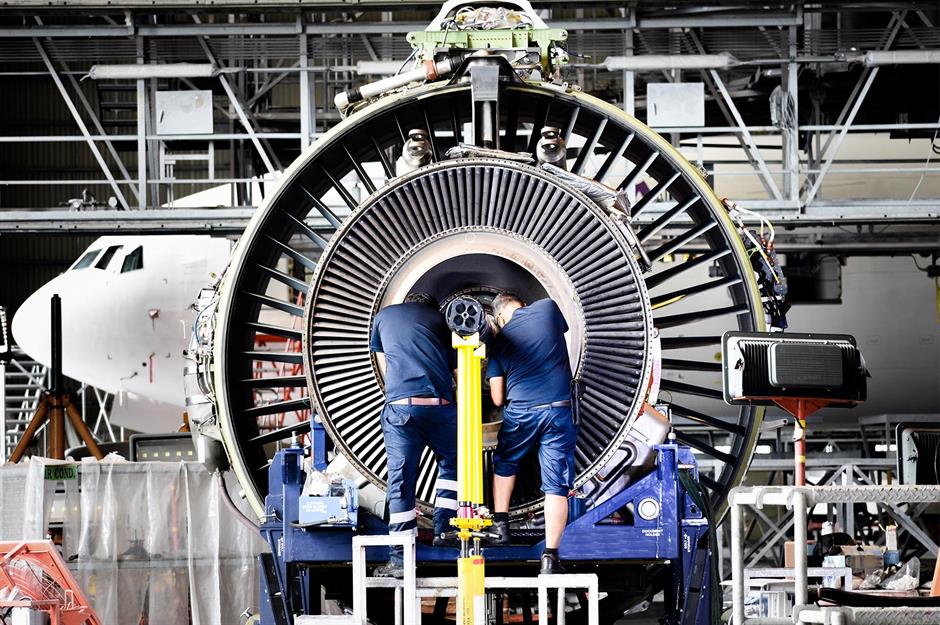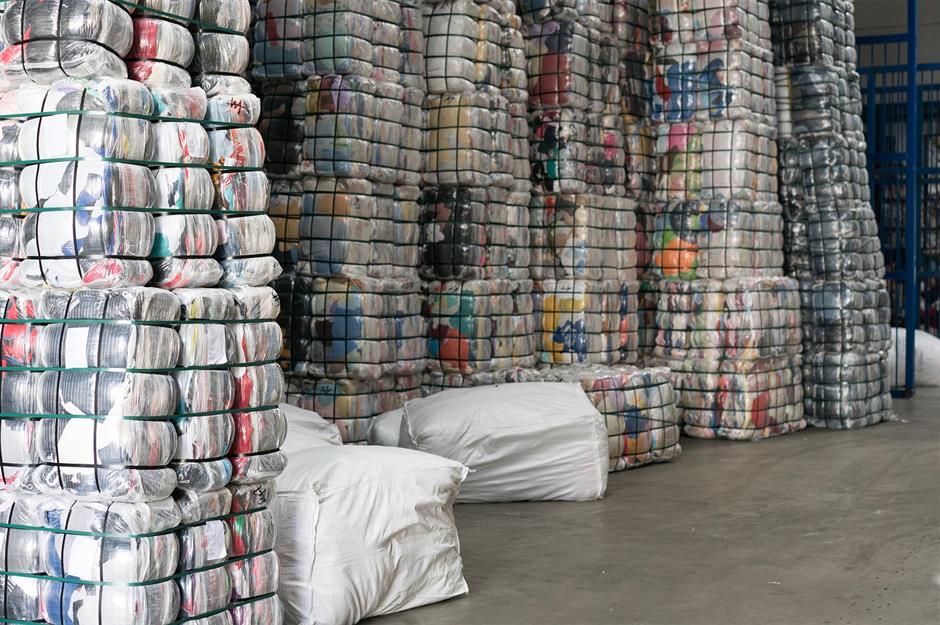The surprising industries America makes a fortune from
The unexpected industries America rules over

America is undeniably one of the world's biggest superpowers. Want proof? The nation boasted the world's second largest export economy in 2020, sending goods worth more than $1.34 trillion all around the world.
But some of the industries that contribute to the US economy may come as a surprise to the typical citizen. Did you know, for example, that America is the world's biggest exporter of needles? Or that it's leading the way with its exports of brewery dregs? Didn't think so...
Click or scroll through our gallery to discover the unlikely industries that America rules over, according to recent data from the Observatory of Economic Complexity (OEC).
Syringes

The US is the world's top exporter of syringes in the world, having exported $858 million-worth of them in 2020 with a 15% market share.
Syringe production ramped up significantly during the early months of the coronavirus pandemic, with the US Department of Health and Human Services partnering with the Department of Defense to deliver "Project Jumpstart".
The ambitious program aimed to fund the production of more than 500 million prefilled syringes by the end of 2021, making the distribution of a COVID-19 vaccine among the US population that bit easier.
Needles, catheters and cannulae

In a similar vein, the US is also the biggest exporter of needles, catheters, and cannulae, shipping out an incredible $6.14 billion-worth in 2020. This accounted for about 20% of the global market.
America is also the world's top importer of the vital medical supplies, bringing in goods worth $6.27 billion in 2020. The Netherlands and Germany were the next biggest importers, although they still trail far behind the US at $3.18bn and $2.34bn respectively.
Oscilloscopes

You might not have heard the word "oscilloscope" before but you'll certainly have seen one. These crucial devices are used in hospitals to monitor the heart and brain activity of patients, and are used in a wide range of other measurement contexts as well.
The US is actually a leading player in the global export of oscilloscopes, and exported $5 billion-worth of them in 2020.
Compasses

America is certainly a country with strong direction – so perhaps its booming compass industry is no surprise.
A compass is vital for seafarers and adventurers alike, and sales of outdoor recreation equipment saw a surge during summer 2020 as people explored new hobbies during the pandemic.
On a global level, US-based businesses continue to export the most, and have done since 2005. In 2020, the US compass export market was worth around $158 billion and accounted for 22% of the world's compass market.
Equine and bovine hides

Animal hides are big business, especially in America. In 2020, the US produced equine and bovine hide exports worth around $77.5 million, which was about 24% of the global market.
However, it doesn't dominate the entire animal hide market. The general hide industry tends to be topped by China, while the tanned hide market is mostly controlled by Spain and Italy.
Asphalt

Asphalt is a multimillion-dollar industry in America, and 2020 saw the country rank as its top exporter, shipping out around $304 million of the material.
While asphalt can be used in roofing, it's mainly used for paving roads and airport runways.
Starch residue

There's a lot of money to be made from waste, especially starch residue found in the form of cocoa shells, husks, beet-pulp, bagasse (pulp from sugarcane), and argol (a by-product of grape fermentation).
In fact, the US starch residue industry is the largest in the world and accounts for more than half the global market share, generating America $2.9 billion in 2020 exports.
The different starches all have their own individual uses: beet pulp is used for cow feed, for example, while bagasse (pictured) is used as a biofuel and building material. Argol is commonly used in dyeing and in fertilizers.
Whey

Odds are that when you think of whey, fitness-related protein powders spring to mind. But in its original form, whey is actually the liquid left behind after milk has been curdled and strained.
America was the top global exporter of whey in 2020, shipping out $712 million-worth and accounting for 14.7% of the global market. The largest importers of whey in 2020 were China and the Netherlands, making up 16% and 11% of the market share respectively.
Titanium

Titanium is a highly versatile metal that is often used to manufacture items that need to be strong yet lightweight, such as golf clubs and bicycles. It's also commonly used in medical settings; for example, titanium screws are capable of holding bone in place.
In 2020, America held a whopping 31% of the export share for titanium, with $1.46 billion of it leaving the country.
Original engravings, prints and lithographs

Ever wondered what a lithography machine does? This traditional printing method involves using a stone or smooth metal plate to create a copy and dates back to the late 18th century. It was invented by German actor Alois Senefelder, who reportedly came up with the idea in a bid to replicate musical scores.
Today, America is the top exporter of lithograph prints and engravings, making $165 million in 2020 alone. That said, the United States is also currently the world's top importer in the field, spending $91 million.
Antiknock

Antiknock is an agent that is added to gasoline or petrol to reduce engine knocking, which is a type of combustion that can cause expensive damage to the motor of a vehicle.
It has been used in cars since the 1920s, and the United States exported $2.72 billion of the stuff in 2020, accounting for about 25% of the global market.
Photo lab equipment

The US exported more photo lab equipment than any other country in 2020, with a total outbound value of $12.4 billion. China is the biggest importer of photography equipment with a 31% share of the market.
The US is clearly a snap-happy nation: according to the Bureau of Labor Statistics, there were at least 110,500 professional photographers around the country in 2020.
Brewing and distillery dregs or waste

In the process of producing our favorite alcoholic drinks, breweries generate extraordinary amounts of waste. With a value of $2.26 billion, the US shipped off more distillery dregs than any other country in 2020, making up an astonishing 78% of the global brewing waste exports.
The next highest country, the Netherlands, exports a tiny amount in comparison – just $98.4 million-worth (3.4% of the market). As our collective consciousness about environmental issues continues to grow, breweries and distilleries are increasingly moving towards becoming "zero-waste", which could mean that the export and import figures decrease in the coming years.
Silica sands

Silica sand (also known as "quartz sand") is made up of at least 95% silicon oxide. In comparison, regular sand contains a smaller amount of silica, as well as a mix of other elements and minerals.
Silica sand has a lot of uses, particularly in glassmaking and construction, and is also regularly found on golf courses and sports fields. In 2020, America was responsible for 28% of the world’s silica sands exports, with a value of $363 million.
It’s likely that much of the sand was headed to China, which, bringing in $202 million of the substance in the same year, is the world's largest importer.
Edible offal

Not to everyone’s taste, edible offal comprises a selection of animals’ internal organs that are safe for human consumption, including the liver, heart, and kidneys.
The US is the world’s biggest exporter of the foodstuff and made up 17% of the global market share in 2020, bringing in a total value of $1.46 billion. Spain was the second biggest edible offal exporter, followed by Germany; both had less than 10% of the market.
Surveying equipment

The term "surveying equipment" can be applied to anything that is used to determine distances and angles, with related items typically used on construction sites.
America was the top exporter of all things surveying-related in 2020, with its total exports reaching $1.45 billion.
Gas turbines

Gas turbines are the engines that sit at the heart of a power plant, and are used to turn gas or other fuel into energy.
The US exported more gas turbines than any other country in 2020, selling $27.3 billion-worth and claiming 21.5% of the global market share – an increase of 3.1% from 2019.
Sound recordings

As the world’s most powerful country, America makes a lot of noise – and a lot of money as a result.
In 2020, the US made $242 million through exporting sound recordings. While that accounts for 15% of the global export market, America actually imports more (21%) sound recordings than it ships out.
Cellulose

The word "cellulose" might cast you back to high school biology classes about plant cells. Much like it does with all things green, cellulose creates a sense of structure in everyday objects too, particularly helping to make paper-based products stiff and strong.
In 2020, the US was the world’s biggest exporter of cellulose, and its 21.9% market share had a value of $1.22 billion.
Liquefied butane

Butane is typically used as a fuel propellant or refrigerant, and can be found in portable appliances such as mobile heaters and cigarette lighters.
The US was the biggest exporter of the liquefied version of the chemical in 2020, having sold $3.43 billion of it. This accounted for a 23% share of the global market, up from 20% the previous year.
Sawdust

Believe it or not but sawdust is actually a billion-dollar business, with America holding a 22% share in the industry's global export market thanks to its outgoings of $1.18 billion in 2020.
The UK imports more sawdust than any other nation and spent $1.4 billion on it in the same year. Widely thought of as a waste product, sawdust is commonly converted into wood pulp, and can also be used for pet care and even fuel.
Hair products

The shampoos, dyes, gels, and various other products we use to tame our hair add up to a big-buck industry, led by the US.
In 2020, America exported $1.34 billion of hair products (about 9% of the global market) and imported a near-identical amount worth $1.32 billion.
It comes as little surprise that global hair product exports decreased by 3.14% between 2019 and 2020: with people forced to stay at home due to lockdowns and hair salons forced to close, there was less demand.
Essential oils

Essential oils are used across various industries, with their fragrances incorporated into everything from perfumes to detergents. They're also sought after for medicinal purposes, and are commonly prescribed for treating stress, insomnia, and anxiety.
On a global scale, the market for essential oils was worth $5.41 billion in 2020. The US was behind the lion share of exports, accounting for 15% or $816 million. It imported more than it shipped out, bringing in $1.05 billion of the aromatic liquids.
Aircraft parts

While France is the largest exporter of planes, helicopters, and spacecraft, the US has a bigger market share for the parts that keep these machines flying.
In 2020, America exported aircraft parts worth a collective total of $12.5 billion, dominating the market with an 18% share. The US was also the largest importer, purchasing $15.1 billion in 2020.
Paintings

With a 42% share of the world market for paintings, America far surpasses the UK's second-place 16% share. Despite the chaos caused by the pandemic, the US still managed to export paintings worth just under $5 billion in 2020. It also imported its fair share, bringing in pieces worth a collective total of $2.29 billion.
To date, the most expensive painting ever sold was Leonardo da Vinci's Salvator Mundi (pictured), which was auctioned off at Christie's in New York for a whopping $450.3 million in November 2017.
Used clothes

In 2020, the US exported used clothes worth around $600 million, which accounted for about 15% of the global market. China and the United Kingdom were in second and third place for exports, while the top three importers for this $3.87 billion global industry were Ghana, Ukraine, and Pakistan.
Unfortunately second-hand clothing from the Western world can sometimes overwhelm the cities that are importing these goods, causing a pollution crisis. Advocates are calling for more sustainability in the manufacturing and reusing of textiles, which may impact future US exports.
And on that note, discover which countries are the best (and worst) at recycling.
Comments
Be the first to comment
Do you want to comment on this article? You need to be signed in for this feature
Most Popular
Features How Michael Jackson's children boost their bank balances